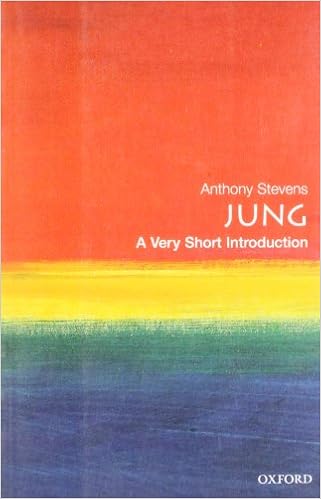
I have enjoyed a dozen books in the ‘Very Short Introduction’ series but I must say this one on Jung is the best I’ve come across. You will not find a clearer presentation of the life and psychology of Carl Jung. Quite an accomplishment since Jung’s approach to the psyche and therapy is revolutionary and multifaceted. Since the subjects covered in this short introduction are so rich in content, for the purposes of this review here are a few quotes along with my comments, starting with Jung’s break with his teacher and mentor in the world of psychoanalysis – Sigmund Freud.
“As time passed, Jung’s differences with Freud became harder to conceal. Two of Freud’s basic assumptions were unacceptable to him: (1) that human motivation is exclusively sexual and (2) that the unconscious mind is entirely personal and peculiar to the individual.” ---------- Turns out, this is the difference for Jung that made all the difference. In Jung’s view, we humans have many reasons for doing what we do well beyond the boundaries of sexuality. And also, the human unconscious taps into the entire range of experiences we have developed as a species over millions of years
“Moreover, beneath the personal unconscious of repressed wishes and traumatic memories, posited by Freud, Jung believed there lay a deeper and more important layer that he was to call the collective unconscious, which contained in potenitia the entire psychic heritage of mankind. . . . The existence of this ancient basis of the mind had first been hinted to him as a child when he realized that there were things in his dreams that came from somewhere beyond himself. Its existence was confirmed when he studied the delusions and hallucinations of schizophrenic patients and found them to contain symbols and images which also occurred in myths and fairy-tales all over the world. --------- Again, Jung acknowledged there is a personal component to the unconscious realm we encounter in our dreams, but this is only the start: there is an ocean of unconscious energy deeper and wider than the personal – the collective unconscious. Thus, Jung’s lifelong fascination with symbols, such as mandalas, numbers, mythic animals, light-infused and shadowy superhuman presences.
“What distinguishes the Jungian approach to developmental psychology from virtually all others is the idea that even in old age we are growing toward realization of or full potential. . . . aging was not a process of inexorable decline but a time for the progressive refinement of what is essential. ‘The decisive question for a man is: is he related to something infinite or not?’ ---------- A critical difference from Freud: what happens in our psyche isn’t always about working out our relationship with our mother and father buried in our personal past; rather, every stage in the human cycle, childhood, adolescence, young adulthood, middle age, old age, has its own powerful psychic energies and challenges. It is our task to accept the challenges at each stage of our life to reach the full flowering of our humanity. Thus, for Jung, psychotherapy isn’t so much about curing illness as it is about personal growth.
“Jung held it to be the business of the psychologist to investigate the collective unconscious and the functional units of which it is composed – the archetypes, as he eventually called them. Archetypes are ‘identical psychic structures common to all’, which together constitute ‘the archaic heritage of humanity’. ---------- The author devotes two entire chapters to Jung’s archetypes: the Self, the ego, the shadow, the persona, the anima/amimus. And, what is an archetype? By way of example, we read: “One example which Jung frequently quoted was that of a schizophrenic patient who told him that if he stared at the sun with half-closed eyes he would see that the sun had a phallus and that this organ was the origin of the wind. Years later Jung came across a Greek text describing an almost identical vision.’ In other words, the archetype images we encounter in dreams belong to a common dream language we share will all humans, including our prehistoric ancestors and peoples of all world cultures and societies. And, according to Jung, these archetypical images can be understood as promptings to encourage our growth.
“In working on a dream the starting-point for Jung was not interpretation but ‘amplification’ – that is, to enter into the atmosphere of the dream to establish its mood as well as the detail of its images and symbols, in such a way as to amplify the experience of the dream itself. Then its impact on consciousness is enhanced. ---------- Dreams are central to Jungian analysis. And if you are interested in pursuing Jung’s vision of what it means to live a full human life, reading this small book would be a great place to start.
No comments:
Post a Comment